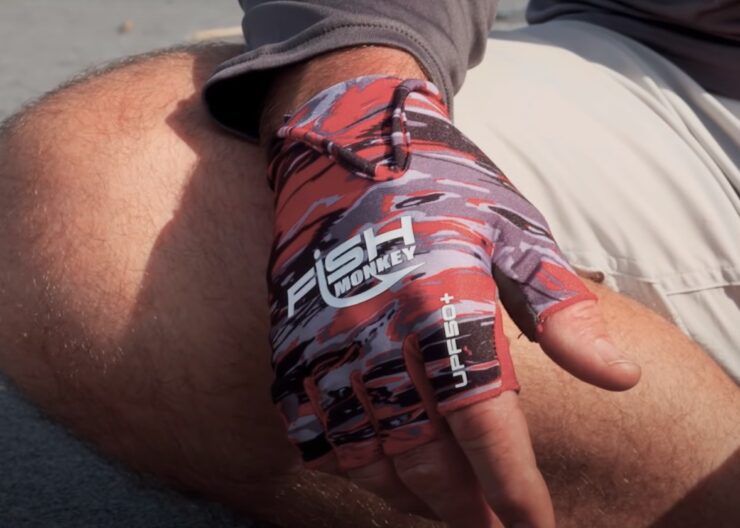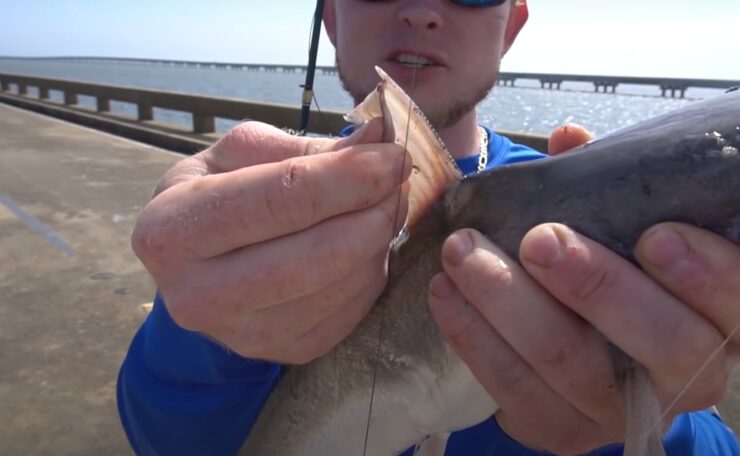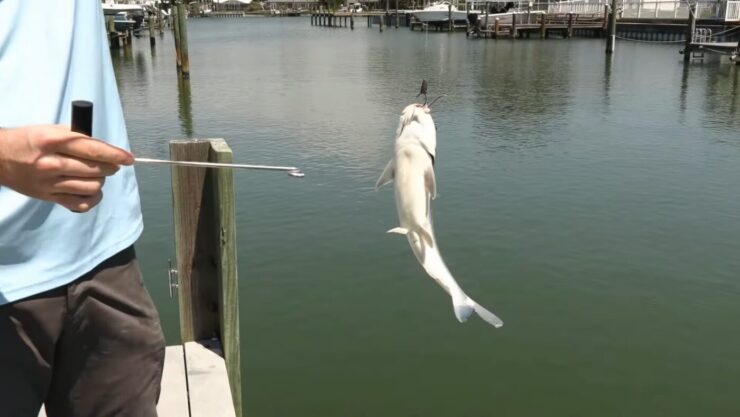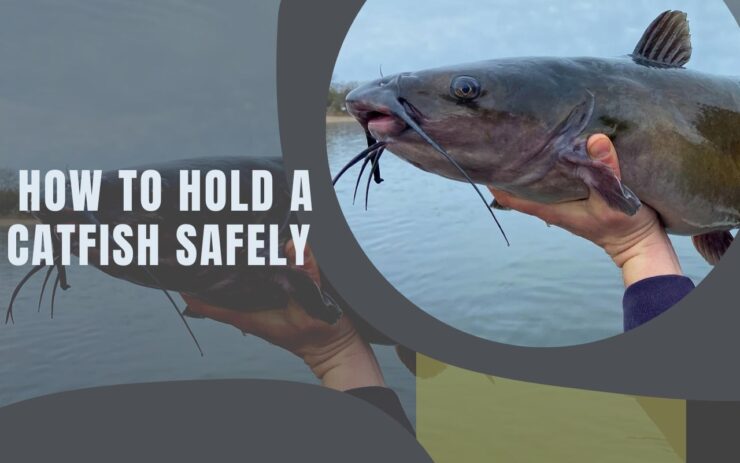There’s magic in angling, especially when it comes to reeling in a sturdy, whiskered catfish from the murkiness of the water. As an angler with years of experience under my belt, I’ve felt the excitement of the fight, the anticipation as I draw the catch closer, and the satisfaction of a successful release. Yet, along with these feelings, a key responsibility every angler carries is to ensure the safety and well-being of the fish we catch.
This guide shares the wisdom I’ve gained from my countless encounters with catfish. It aims to arm you with the information you need to handle these fascinating fish safely, ensuring that our fishing practices remain sustainable, responsible, and respectful. Here’s to a fishing future where every angler feels the thrill of the catch and the joy of a safe release.
Table of Contents
ToggleA Brief Overview

Before diving into the nitty-gritty of how to hold a catfish safely, it’s important to understand the significance of proper handling techniques. This doesn’t only ensure your safety but also preserves the fish’s well-being, making catch and release a successful and sustainable practice.
From the whiskered wonders in the Southern US to the colossal catfish of Europe, these fish come in a wide variety. And while their allure has captivated anglers worldwide, it’s equally important to respect these fantastic creatures by handling them responsibly.
Catfish Anatomy
Knowing Their Defense Mechanisms
Catfish are unique in their anatomy. Their whisker-like barbels, tough skin, and, most importantly, their spines have adapted to the challenging environments they inhabit. Familiarity with these structures is crucial when handling a catfish.
On either side of a catfish’s head are sharp, spine-like pectoral fins and a dorsal fin. These contain a mild venom, which, while not usually dangerous to humans, can cause discomfort if it penetrates the skin. Remember, it’s not an act of aggression but a natural defense mechanism.
The Significance of Barbels
Often mistaken for whiskers, catfish barbels serve as sensory organs, helping them locate food in murky waters. Understanding these organs not only allows you to handle the catfish properly but also provides insight into their fascinating lives beneath the water’s surface.
Don’t be tempted to hold a catfish by its barbels. Not only is this uncomfortable for the fish, but it can also cause injury. Instead, treat these sensitive structures with care to ensure a successful catch and release.
Essential Equipment

Gloves: Your Safety Companion
When handling a catfish, a sturdy pair of fishing gloves is a great investment. They provide grip and protection, helping to prevent any unfortunate run-ins with a catfish’s spines.
- Cut-resistant materials can offer protection against sharp spines.
- Textured gloves offer enhanced grip, even in wet conditions.
- Ensure a snug fit to maintain dexterity when handling your catch.
Appropriate Net: Safe Handling Made Easy
A fishing net isn’t just for securing your catch – it can also serve as a safe holding area while you prepare to handle the catfish. Netting it properly is the first step toward a safe and responsible release.
Look for a net with a rubber or silicone mesh. These materials are less likely to harm the fish’s slime coat, an essential barrier that protects the fish from infection. Also, consider the size of the net – it should be large enough to comfortably accommodate the catfish.
Proper Handling Techniques
Grip Techniques: Thumb and Fingers
Once your catfish is safely in the net and under control, it’s time to establish a safe and firm grip. The “thumb grip” and the “finger grip” are two commonly used techniques.
In the thumb grip, the thumb is inserted into the fish’s mouth with the fingers wrapped underneath. However, be cautious: many catfish species have sandpaper-like teeth that can cause minor abrasions. The finger grip involves inserting your fingers into the fish’s gill covers, avoiding the sharp gill rakers. The thumb then rests on the fish’s lower jaw.
Safe Release: The Golden Rule
After posing for a quick picture, it’s time to release your whiskered friend. Gently lower the fish into the water, holding it upright until it swims off on its own. If the fish seems disoriented, give it some time – a brief recovery period is normal after a strenuous fight.
Ensure the release site is calm and free of obstacles. The goal is to reduce the amount of stress the fish experiences upon release, helping it recover and thrive.
Advanced Handling: Dealing with Large Catfish
Tackling Big Cats
Catching a large catfish is thrilling, but handling these giants requires extra caution. They can be heavier, more powerful, and their pectoral and dorsal spines are significantly larger.
When lifting a large one, always use two hands to evenly distribute the weight and prevent injury to the fish. One hand should support the belly while the other holds the tail, creating a stable and secure grip.
Special Considerations
Remember, big catfish are often older fish that play an essential role in maintaining a healthy population. They deserve extra respect and care.
When releasing a big catfish, spend a bit more time ensuring they are ready to swim off. Recovery may take longer after an exhausting fight. By supporting them gently in the water, you give them the best chance of survival.
Dealing with Unfortunate Circumstances

Handling Catfish Stings
Despite taking every precaution, there might be situations where you accidentally get pricked by a catfish’s spine. Should this happen, it’s crucial to know how to handle the situation to minimize discomfort and avoid infection.
Firstly, cleanse the wound with warm, soapy water to help break down the venom. Then, apply an antibiotic ointment and cover the wound with a clean bandage. It’s recommended to seek medical advice, especially if symptoms persist or if you are prone to allergic reactions.
Catfish Ingesting Hooks
Occasionally, a catfish may swallow the hook deeply, making it difficult to remove without causing the fish harm. In such instances, the safest action is often to cut the line as close to the hook as possible before releasing the fish.
Over time, the hook will rust away, causing the fish minimal discomfort. Remember, causing unnecessary harm to retrieve a hook contradicts the ethos of ethical angling.
Catch and Release: The Ethical Angler’s Responsibility

The Importance of Ethical Angling
The practice of catch and release is an important part of ethical angling. By releasing a fish unharmed, you contribute to the sustainability of the species, ensuring future generations can enjoy the thrill of fishing for catfish.
Fishing responsibly involves more than just releasing the fish. It also encompasses using ethical gear, adopting safe handling practices, and respecting the natural habitats of the fish. This reflects a broader commitment to conservation and the promotion of biodiversity.
Spreading Awareness
Promoting safe and ethical angling practices isn’t a solitary endeavour. As a member of the angling community, it’s also your responsibility to spread awareness, whether that’s through educating beginner anglers, participating in conservation initiatives, or simply leading by example.
If you’re fishing with friends or family, use it as an opportunity to demonstrate proper handling techniques. By instilling these values in others, we can collectively ensure a bright future for the sport of fishing and the species we love.
Common Misconceptions
“Catfish Stings are Deadly”
While this species’ sting can cause discomfort, it is not generally life-threatening to humans. The venom produced by catfish is mild, and while it can cause local pain, swelling, and sometimes secondary infections, it is rarely deadly. This misconception often leads to unnecessary fear and mishandling.
“Holding Catfish by Their Barbels is Safe”
This is another common misconception. The barbels are not handles, and holding a catfish this way can cause injury to the fish. They are sensory organs essential for the catfish’s survival, so it’s important to handle the fish in a way that avoids harming these delicate structures.
Final Words
Learning to hold a catfish safely is an essential skill for any angler. While it requires practice and some knowledge of its anatomy, it’s a rewarding investment that ensures the safety and respect of these intriguing creatures. With the right equipment, handling techniques, and a responsible attitude, you can enjoy your angling adventures to the fullest.
Remember, the ultimate goal of fishing is to appreciate the sport and the species we pursue. Handle with care, release with respect, and the catfish will continue to thrive for generations of anglers to come.
Related Posts:
- 16 Best Kayak For Beginners 2024 - Kayaking Adventure Gear
- Heavy Duty Fishing: 11 Best Rods And Reels For Big Fish 2024
- 12 Best Beach Wagons & Carts 2024 - For All-Terrain
- 10 Best Fish Finders Under $200 2024 - Top Affordable Picks
- 10 Best Inflatable Kayak 2024 - Rivers, Lakes & Open Seas
- 10 Best Saltwater Fishing Boats - Ultimate Angling Adventure












